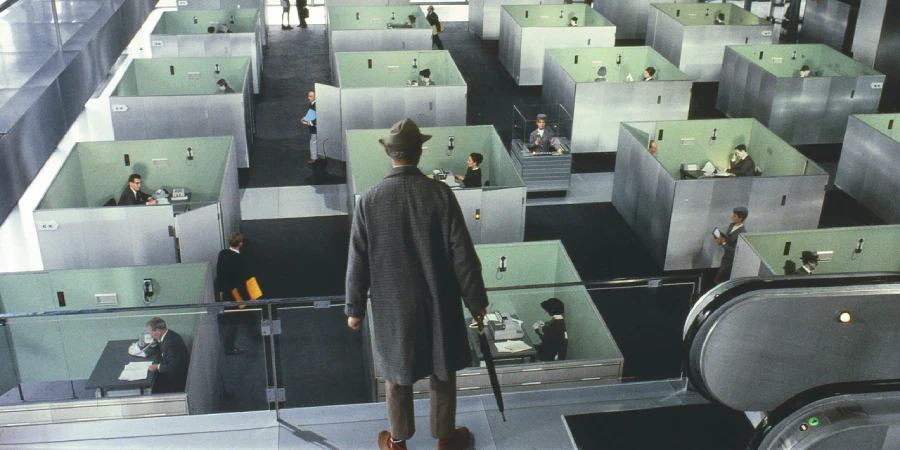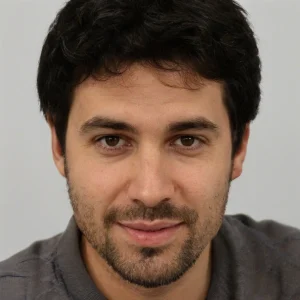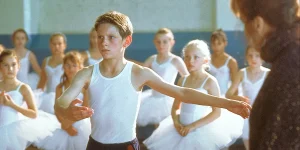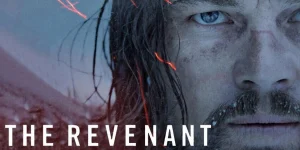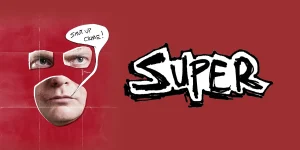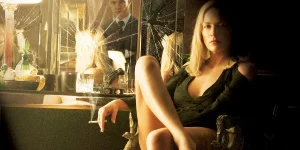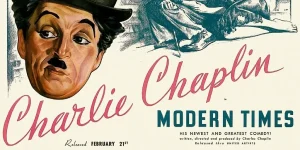Jacques Tati’s Playtime is not just a film—it’s an architectural comedy ballet of modern life. Released in 1967, the film abandons traditional narrative structure and instead offers a mosaic of visual gags, social satire, and elaborate choreography. It’s a cult classic today, but at the time of release, it was a financial disaster that nearly ruined Tati. Let’s dive into the details.
Table of Contents
ToggleDetailed Summary
Introduction: Monsieur Hulot in the World of Modernity
The film opens in a hyper-modern, sterile Paris filled with glass, steel, and right angles. Monsieur Hulot (Tati’s signature character) arrives, wandering through an airport and bureaucratic offices where everything looks uniform and indistinguishable. The humor comes from Hulot’s bumbling attempts to navigate this world where modern technology seems to complicate rather than simplify.
The Expo and the Lost Individuality
Hulot finds himself drifting into a trade exposition, where designers present absurd modern gadgets: a door that closes silently, a wastebasket with a built-in lid, and household items that look futuristic but lack practicality. Tati’s satirical lens shows how technology and consumerism make life uniform and confusing. Meanwhile, a group of American tourists arrives, becoming our secondary lens on this environment.
The Restaurant Chaos
The centerpiece of the movie—and its longest sequence—takes place in a brand-new luxury restaurant on its opening night. The staff is unprepared, construction is unfinished, and everything that can go wrong does: glass doors break, waiters’ uniforms rip, chairs collapse, and the dance floor becomes overcrowded. Hulot, along with the tourists and Parisians, gets swept up in the escalating chaos. Instead of order, the night becomes more joyous as the guests create their own fun from the failures of design.
Night into Morning
As dawn breaks, the once-unforgiving city turns playful. Buses circle like merry-go-rounds, traffic becomes rhythmic, and the city takes on a carnival-like atmosphere. The cold, glassy Paris of the opening has transformed into a place of humanity, laughter, and music.
Movie Ending
The final sequence is crucial: after the wild night in the restaurant, morning arrives. The tourists reboard their bus to continue their Paris trip. Hulot, who had bonded with one of the American tourists, Barbara, makes a gentle gesture of farewell—he buys her a small gift from a street vendor. The two part ways, and life resumes its normal rhythm.
But Tati makes sure the last impression isn’t melancholy. As the bus drives through the roundabout, cars circle in a near-choreographed dance, horns honking like musical instruments. The gray cityscape feels transformed into a carousel of life. The ending underscores Tati’s ultimate point: human warmth and improvisation can break through even the most dehumanizing architecture and technology.
Are There Post-Credits Scenes?
No, Playtime does not have a post-credits scene. Tati’s film ends firmly with the morning carousel-like traffic, and the credits roll over the atmosphere of renewal and playfulness.
Type of Movie
Playtime is a comedy, but more specifically, it is a satirical visual comedy and observational art film. It blends elements of slapstick, architectural critique, and cinematic choreography.
Cast
- Jacques Tati as Monsieur Hulot
- Barbara Dennek as Barbara (the young American tourist)
- A largely non-professional supporting cast, including real tourists and locals, used to create a natural, ensemble feel.
Film Music and Composer
The score was composed by Francis Lemarque, a French singer-songwriter. The music is light, jazzy, and whimsical, used sparingly. Much of the “music” of Playtime comes from ambient sounds—footsteps, squeaky chairs, doors, horns—that act as comic rhythms.
Filming Locations
Tati built an enormous set known as “Tativille” on the outskirts of Paris. This gigantic artificial city, with steel-and-glass buildings, traffic systems, and working escalators, cost an astronomical sum and is considered one of the most ambitious film sets ever constructed. It wasn’t Paris itself but a replica of a hyper-modern city, meant to represent the future of urban life. The set became an essential character in the film, symbolizing the sterility and absurdity of modern architecture.
Awards and Nominations
- Nominated for the Academy Award for Best Foreign Language Film (France, 1969).
- Won the French Syndicate of Cinema Critics Award for Best Film (1968).
Though not a huge awards winner at the time, it is now regarded as one of the greatest films ever made by critics and filmmakers.
Behind the Scenes Insights
- Jacques Tati financed the film himself, mortgaging his home, which led to his financial ruin after the film’s box-office failure.
- The construction of “Tativille” required concrete, glass, and steel—essentially building a real city set. Airplanes flying overhead had to be paid to reroute so their sounds wouldn’t interrupt filming.
- Tati often worked with long takes and deep-focus shots, meaning everything in the frame was choreographed like a ballet.
- Extras were trained for months to walk, interact, and behave in sync with the comic rhythm.
Inspirations and References
- Inspired by Tati’s fascination (and skepticism) with modern architecture and urban planning in 1960s Paris.
- The character Hulot had appeared in earlier films (Mr. Hulot’s Holiday, Mon Oncle), but in Playtime he becomes just one figure in the crowd—intentionally de-centered.
- References Charlie Chaplin’s and Buster Keaton’s style of silent comedy, but adapted for a widescreen, color, sound-driven medium.
Alternate Endings and Deleted Scenes
Tati shot hours of footage for Playtime, some of which was cut. Certain sequences in Tativille that showed even more of the city’s architectural absurdities were removed for pacing. No drastically different ending was filmed, but the restaurant sequence was originally even longer.
Book Adaptations and Differences
The film is not based on a book. However, books have been written about Playtime and its production, often treating it like a case study in cinematic architecture.
Memorable Scenes and Quotes
Key Scenes
- The airport introduction with people indistinguishable from each other.
- The trade expo with impractical gadgets (like the silent door).
- The glass maze of office cubicles.
- The restaurant disaster that turns into a joyous, improvised party.
- The carousel-like traffic roundabout at the end.
Iconic Quotes
Tati’s comedy is largely visual, so dialogue is minimal. Most of the “quotes” are actually sound-driven gags (the squeaky shoes, the breaking glass door). Barbara’s simple lines about Paris and her curiosity stand out, but the memorable “voice” of the film is visual.
Easter Eggs and Hidden Details
- The Eiffel Tower and Arc de Triomphe appear only as reflections in glass—never directly, emphasizing modernity overshadowing tradition.
- Multiple Hulots appear at once in one sequence, confusing Barbara, symbolizing the loss of individuality in the modern city.
- The “silent door” gag continues even after the glass breaks, with the doorman miming its existence.
Trivia
- Tati insisted on shooting in 70mm, which gave the film a breathtaking scale but limited its distribution.
- The production bankrupted Tati, and he struggled financially for the rest of his life.
- Many critics and filmmakers (including Stanley Kubrick) praised it as one of the most visually ambitious films ever made.
Why Watch?
Watch Playtime if you love meticulous visual comedy, urban satire, and films that push the boundaries of what cinema can be. It’s a hypnotic, funny, and strangely moving portrait of humanity within the coldness of modern progress.
Director’s Other Movies
- Jour de fête (1949)
- Mr. Hulot’s Holiday (1953)
- Mon Oncle (1958)
- Trafic (1971)

